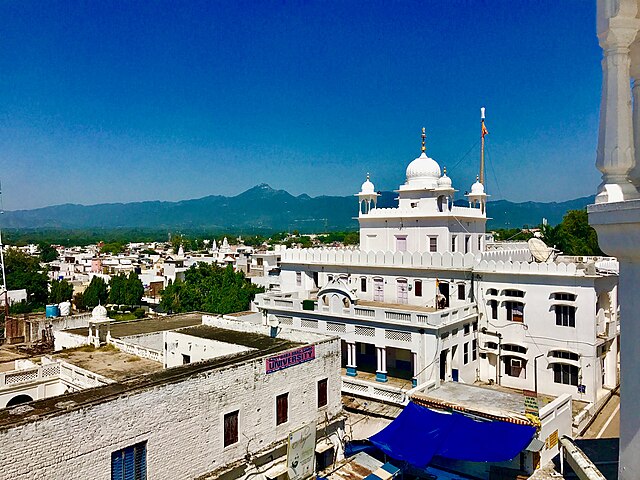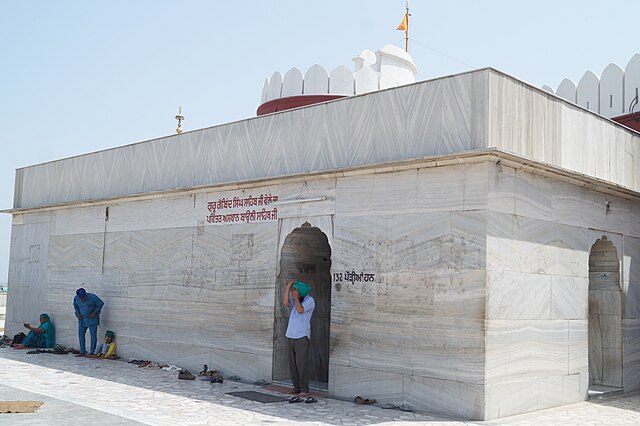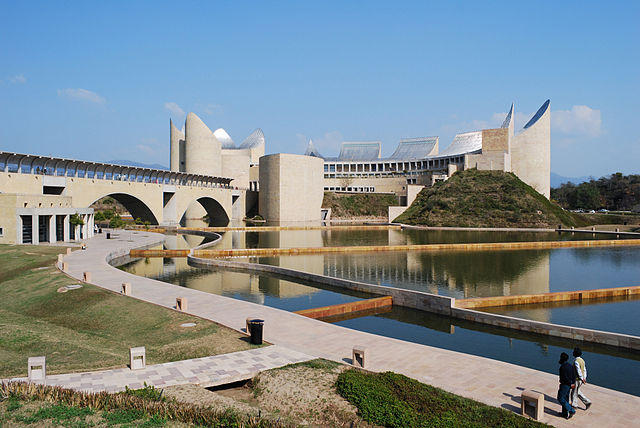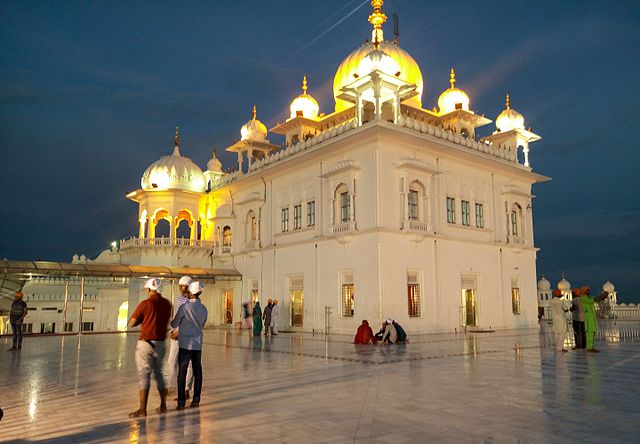Planning a visit to the holy city of Anandpur Sahib? Understanding the local weather patterns can make or break your experience. Whether you’re a pilgrim seeking spiritual solace or a tourist exploring Punjab’s rich heritage, knowing what Mother Nature has in store is crucial for a comfortable journey.
Anandpur Sahib, literally meaning “City of Divine Bliss,” experiences a typical North Indian climate with distinct seasonal variations. From scorching summers to refreshing monsoons and pleasant winters, each season brings its own charm and challenges. Let’s dive deep into understanding this sacred city’s weather patterns so you can plan your visit perfectly.
Understanding Anandpur Sahib’s Geographic Location and Climate Zone
Where is Anandpur Sahib Located?
Nestled in the Rupnagar district of Punjab, Anandpur Sahib sits at approximately 31.2°N latitude and 76.5°E longitude. The city lies at an elevation of about 350 meters above sea level, positioned strategically between the Sutlej and Beas rivers. This geographical positioning significantly influences its weather patterns, creating a unique microclimate within the broader Punjab plains.
The city’s location in the foothills of the Shivalik range adds an interesting dimension to its weather. While it’s not high enough to experience true hill station weather, the proximity to these hills does moderate temperatures slightly compared to the deeper plains of Punjab.
Climate Classification and Weather Patterns
Anandpur Sahib falls under the subtropical climate zone, characterized by three distinct seasons. The Köppen climate classification places it in the “Cwa” category – a humid subtropical climate with dry winters. This means you’ll experience hot summers, wet monsoons, and relatively dry, cool winters.
The city receives most of its annual rainfall during the monsoon months, with precipitation averaging around 600-800 millimeters per year. The weather patterns are heavily influenced by the Southwest monsoon winds and the Western Disturbances that affect North India during winter months.
Seasonal Weather Breakdown in Anandpur Sahib

Summer Season (April to June) – Hot and Dry
Summer in Anandpur Sahib can be quite intense, much like the rest of Punjab. The season typically begins in April and extends through June, with May being the hottest month. Think of it as nature’s way of testing your patience before rewarding you with the monsoon relief!
Temperature Ranges During Summer
During peak summer, daytime temperatures soar between 35°C to 45°C (95°F to 113°F). The mercury has been known to touch 47°C on particularly harsh days. Nights offer some respite, with temperatures dropping to around 25°C to 30°C (77°F to 86°F). The heat can be quite oppressive, especially for those not accustomed to North Indian summers.
Rainfall Patterns in Summer
Summer months are predominantly dry, with occasional pre-monsoon showers in late May or early June. These brief thunderstorms, locally called “andhi,” can provide temporary relief but also bring dust storms. The humidity levels remain relatively low during this period, typically ranging from 30% to 50%.
Monsoon Season (July to September) – Wet and Humid
The arrival of monsoon in Anandpur Sahib is nothing short of a celebration. After months of scorching heat, the first drops of rain are welcomed with open arms by both locals and visitors alike.
Monsoon Arrival and Intensity
The Southwest monsoon typically arrives in the first week of July and continues through September. The city receives about 70% of its annual rainfall during these three months. The rain isn’t constant but comes in spells – sometimes gentle drizzles, other times heavy downpours that can last for hours.
Humidity Levels During Monsoons
Humidity levels spike dramatically during monsoons, often reaching 80-90%. The combination of moisture and moderate temperatures (ranging from 25°C to 35°C) creates a muggy atmosphere. While the heat subsides, the high humidity can make it feel uncomfortable for some visitors.
Post-Monsoon Season (October to November) – Pleasant and Clear
This is arguably the most beautiful time in Anandpur Sahib. The monsoons have washed away the dust and heat, leaving behind clear skies and pleasant weather. It’s like nature has hit the refresh button!
Temperatures during this period range from 20°C to 30°C (68°F to 86°F), with low humidity levels. The air feels crisp and clean, making it perfect for outdoor activities and sightseeing. The landscape looks lush and green from the recent rains.
Winter Season (December to March) – Cool and Comfortable

Winter in Anandpur Sahib is generally mild and pleasant, though it can get chilly during peak winter months. The season is characterized by dry weather and comfortable temperatures.
Winter Temperature Variations
December and January are the coldest months, with nighttime temperatures dropping to 5°C to 8°C (41°F to 46°F). Daytime temperatures remain comfortable at 15°C to 20°C (59°F to 68°F). February and March see a gradual warming, with temperatures rising to prepare for the approaching summer.
Fog and Visibility Issues
One weather phenomenon to watch out for during winter is fog. Dense fog can occur, especially in December and January, reducing visibility significantly. This can affect travel plans, particularly early morning journeys. The fog usually lifts by mid-morning as the sun gains strength.
Monthly Weather Patterns and What to Expect
January to March: Winter Months
January kicks off with cool, crisp mornings and pleasant afternoons. You’ll need light woolens for early morning and evening, but afternoons can be quite comfortable in light cotton clothing. February continues this pattern, with slightly warmer days. March marks the transition period, with temperatures gradually rising and spring-like weather beginning to emerge.
April to June: Summer Months
April starts pleasantly but quickly heats up as the month progresses. By May, you’re in full summer mode with scorching afternoons and warm nights. June is typically the peak of summer heat, though some years may see early monsoon arrival bringing relief.
July to September: Monsoon Months
July brings the much-awaited monsoon relief. Expect sudden weather changes, with sunny mornings giving way to afternoon thunderstorms. August is usually the wettest month, while September sees the monsoon gradually withdrawing, leaving behind refreshed landscapes.
October to December: Post-Monsoon and Early Winter
October and November offer the most pleasant weather of the year. December marks the beginning of winter, with noticeable temperature drops, especially during nights and early mornings.
Best Time to Visit Anandpur Sahib Based on Weather

Peak Tourist Season
The best time to visit Anandpur Sahib, weather-wise, is from October to March. During this period, you’ll enjoy pleasant days, comfortable nights, and minimal rainfall. The post-monsoon months (October-November) are particularly beautiful, with clear skies and lush green surroundings.
Winter months (December-February) are ideal for those who prefer cooler weather. The comfortable temperatures make it perfect for exploring the numerous gurudwaras and historical sites without the exhaustion that summer heat brings.
Off-Season Benefits
While summer months are challenging due to heat, they do offer some advantages. Accommodation rates are typically lower, and you’ll encounter fewer crowds at popular tourist spots. If you can handle the heat and plan your activities for early morning or evening hours, summer visits can be quite rewarding.
Monsoon season has its own charm for those who enjoy the romance of rain. The landscape transforms into a green paradise, and the cooler temperatures after rain showers can be refreshing. However, be prepared for potential travel disruptions due to heavy rainfall.
Weather Impact on Local Festivals and Events
Hola Mohalla and Weather Considerations
Hola Mohalla, the major festival celebrated in Anandpur Sahib, typically falls in March. This timing is perfect weather-wise, as March offers pleasant temperatures and clear skies. The mild weather allows for comfortable participation in outdoor events and gatherings that characterize this vibrant festival.
The festival’s timing coincides with the end of winter and beginning of spring, making it ideal for the large crowds that gather for this three-day celebration. Visitors can enjoy the festivities without worrying about extreme weather conditions.
Other Religious Gatherings
Various other religious events and gatherings throughout the year are also influenced by weather patterns. Summer events often start early in the morning or are scheduled for evening hours to avoid peak heat. Monsoon season events may require indoor venues or covered arrangements.
Preparing for Anandpur Sahib’s Weather
What to Pack for Different Seasons
Packing appropriately for Anandpur Sahib’s weather can significantly enhance your travel experience. Here’s what you should consider for each season:
Summer Essentials
For summer visits, pack light-colored, loose-fitting cotton clothes that allow air circulation. Don’t forget sun protection – sunglasses, wide-brimmed hats, and high SPF sunscreen are must-haves. Carry a water bottle and stay hydrated. Light scarves can protect your head and neck from direct sun exposure.
Monsoon Gear
If you’re visiting during monsoon season, waterproof gear is essential. Pack a good quality raincoat or umbrella, waterproof bags for electronics, and quick-dry clothing. Avoid leather shoes; instead, opt for waterproof or synthetic materials that dry quickly.
Winter Clothing
For winter visits, layer your clothing. Mornings and evenings can be quite cool, requiring light sweaters or jackets, while afternoons might be warm enough for just a light shirt. Pack comfortable walking shoes and socks for cooler mornings.
Health Considerations
Different seasons bring different health considerations. Summer heat can lead to dehydration and heat exhaustion, so staying hydrated is crucial. Monsoon season increases the risk of water-borne diseases, so be cautious about drinking water and street food. Winter dry air might cause skin and throat irritation for some people.
Climate Change Impact on Anandpur Sahib’s Weather

Like many places around the world, Anandpur Sahib has been experiencing subtle changes in its weather patterns due to climate change. Summers are becoming slightly more intense, with heat waves lasting longer. Monsoon patterns are becoming more unpredictable, with some years experiencing delayed onset or erratic rainfall distribution.
These changes are gradual but noticeable to long-time residents. Visitors should be prepared for possible variations from traditional seasonal patterns and stay updated with current weather forecasts.
Local Weather Monitoring and Forecasting
For the most accurate and up-to-date weather information, several resources are available. The India Meteorological Department (IMD) provides regular forecasts for the region. Local weather apps and websites offer detailed day-to-day predictions that can help you plan your activities.
Many hotels and tourist information centers in Anandpur Sahib also provide weather updates and advice to visitors. It’s always wise to check the weather forecast before heading out for sightseeing or attending outdoor events.
Conclusion
Understanding Anandpur Sahib’s weather patterns is key to planning a successful and comfortable visit to this holy city. Each season offers its own unique experience – from the challenging but character-building summer heat to the refreshing monsoon showers and the perfect comfort of winter months.
The best time to visit largely depends on your personal preferences and heat tolerance. If you enjoy pleasant weather and don’t mind crowds, October through March is ideal. For those seeking a more authentic experience with fewer tourists, even the challenging summer months can be rewarding with proper preparation.
Remember, weather is just one factor in your travel planning. The spiritual significance and cultural richness of Anandpur Sahib remain constant throughout the year, ready to welcome visitors regardless of the season. Pack smart, stay informed about current conditions, and embrace whatever weather greets you in this city of divine bliss.
Frequently Asked Questions (FAQs)
1. What is the hottest month in Anandpur Sahib?
May is typically the hottest month in Anandpur Sahib, with temperatures often reaching 45°C (113°F) or higher. June can also be extremely hot, though it may see the arrival of pre-monsoon showers that provide some relief.
2. Does Anandpur Sahib experience snowfall during winter?
No, Anandpur Sahib does not experience snowfall. While winters can be cool with temperatures dropping to around 5-8°C, the city’s elevation and geographic location are not sufficient for snow. However, dense fog can occur during peak winter months.
3. How much rainfall does Anandpur Sahib receive annually?
Anandpur Sahib receives approximately 600-800 millimeters of rainfall annually, with about 70% of this precipitation occurring during the monsoon season (July-September). The amount can vary from year to year depending on monsoon strength.
4. Is it safe to visit Anandpur Sahib during monsoon season?
Yes, it’s generally safe to visit during monsoon season, but you should be prepared for heavy rainfall and potential travel disruptions. Carry appropriate rain gear, be cautious of slippery surfaces, and stay updated with weather warnings for any extreme weather events.
5. What should I wear when visiting Anandpur Sahib’s gurudwaras in different seasons?
Regardless of season, you’ll need to cover your head when entering gurudwaras. In summer, wear light-colored, modest cotton clothing with head coverings. During monsoons, ensure your head covering is waterproof or quick-dry material. In winter, layer appropriately but ensure you can easily cover your head with a scarf or turban-style covering.

